When it comes to ensuring the security and safety of our homes, one crucial aspect that often gets overlooked is the type of windows we choose. Whether it’s protecting our loved ones from potential intruders or safeguarding against extreme weather conditions, having the right windows can make all the difference. In this article, we will explore the various options available and shed light on the safest windows for a house, so you can rest easy knowing your home is well-protected.
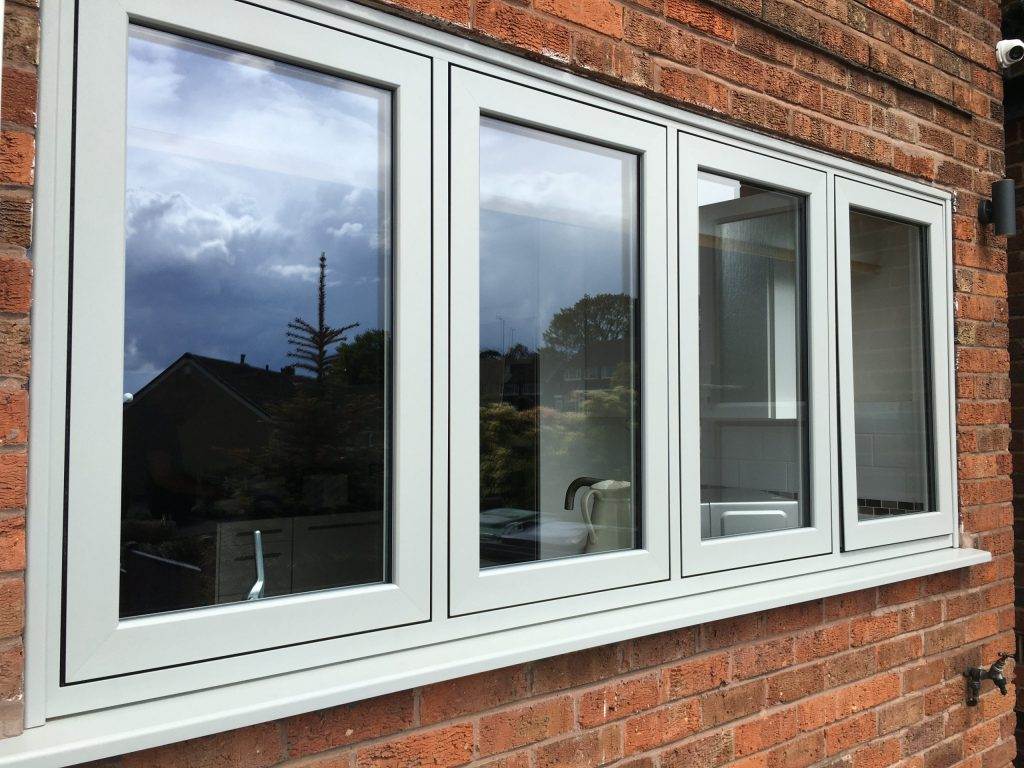
This image is property of www.wolverhamptonglass.co.uk.
1. Impact-Resistant Windows
When it comes to ensuring the safety of our homes, impact-resistant windows are a top choice. These windows are specifically designed to withstand powerful forces, such as hurricanes or strong winds. Let’s take a closer look at the different components that make impact-resistant windows a reliable choice for our homes.
1.1 Laminated Glass
One of the key features of impact-resistant windows is the use of laminated glass. This type of glass is made up of two or more layers of glass that are bonded together with a layer of strong and flexible polyvinyl butyral (PVB) material. This construction provides durability and strength, making it difficult to penetrate.
In the event of an impact, the laminated glass holds together, even if it shatters, due to the interlayer. This prevents dangerous shards of glass from scattering and entering our homes, reducing the risk of injury. Laminated glass also provides an additional barrier against outside noise, enhancing the comfort and tranquility of our living spaces.
1.2 Impact-Resistant Film
Another option for creating impact-resistant windows is the use of impact-resistant film. This film is a transparent, adhesive layer that is applied directly to the glass surface. It strengthens the glass, making it more resistant to impact. In the event of breakage, the film holds the shattered glass together, similar to the laminated glass.
Impact-resistant film offers a cost-effective solution for upgrading the safety of existing windows. It can be applied to both new and old windows, providing an extra layer of protection without the need for a full window replacement. However, it is important to note that impact-resistant film may not provide the same level of impact resistance as laminated glass.
1.3 Reinforced Frames
In addition to the glass itself, the frames of impact-resistant windows also play a crucial role in ensuring their safety. These frames are typically reinforced with strong materials, such as aluminum, vinyl, or fiberglass. Reinforced frames provide structural integrity to the window, preventing it from buckling or collapsing under extreme pressure.
The use of reinforced frames in impact-resistant windows increases their resistance to impact and helps to maintain the overall integrity of the window system. By combining strong frames with laminated glass or impact-resistant film, these windows create a formidable barrier against external threats, providing us with peace of mind and enhanced security.
2. Tempered Glass Windows
tempered glass windows are another option that offers safety features for our homes. This type of glass undergoes a specialized heating and rapid cooling process, resulting in increased strength and durability.
2.1 Strength and Durability
One of the primary advantages of tempered glass is its strength and durability. It is several times stronger than regular glass, making it highly resistant to impact and less prone to breakage. This feature not only enhances the safety of our homes but also reduces the risk of injury due to shattered glass.
Tempered glass is designed to break into small, relatively harmless pieces when shattered, reducing the chance of severe injuries caused by sharp shards. This characteristic is especially important in areas where accidents are more likely to occur, such as bathrooms or playrooms, where children may be present.
2.2 Shatter-Resistance
Another key feature of tempered glass is its shatter resistance. Unlike regular glass, which can break into sharp, jagged pieces, tempered glass fractures into small, pebble-like fragments. This minimizes the risk of injury and makes clean-up easier and safer.
In the event of a strong impact or severe weather conditions, tempered glass is less likely to break completely, even if it sustains damage. This provides an additional layer of protection for our homes, as the window remains intact and continues to provide a barrier against external elements.
2.3 Heat Resistance
Tempered glass is also known for its heat resistance properties. It can withstand high temperatures without compromising its structural integrity. This makes it an ideal choice for windows that are exposed to direct sunlight or intense heat, as it reduces the risk of cracking or shattering under these conditions.
The heat resistance of tempered glass also contributes to energy efficiency, as it helps to prevent heat transfer through the windows. This can lead to reduced energy consumption and lower utility bills, making tempered glass windows not only safe but also environmentally friendly.
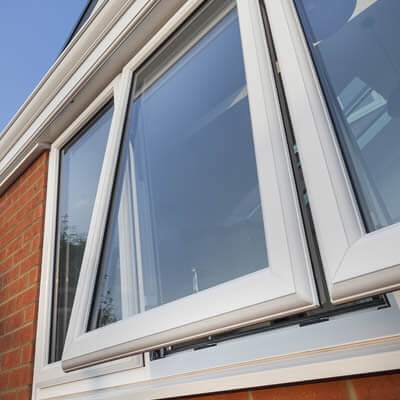
This image is property of www.wolverhamptonglass.co.uk.
3. Security Windows
Ensuring the security of our homes is of utmost importance, and security windows provide an extra layer of protection against intruders. These windows are specifically designed to deter and prevent unauthorized entry, giving us peace of mind when it comes to the safety of our loved ones and our belongings.
3.1 Multi-Point Locking System
One of the key features of security windows is the use of a multi-point locking system. Traditional windows typically have only one lock in the center, which can be easily compromised. However, security windows are equipped with multiple locking points along the frame, making them significantly more difficult to break into.
The multi-point locking system secures the window at several points, distributing the force applied by potential intruders and making it harder to force entry. This provides a higher level of security, reducing the risk of break-ins and enhancing the overall safety of our homes.
3.2 Window Sensors and Alarms
Another important feature of security windows is the integration of window sensors and alarms. These sensors detect any unauthorized entry or tampering with the windows and trigger an alarm system. This alerts us and our neighbors to potential threats, ensuring a rapid response and deterring intruders from further attempts of entry.
Window sensors can be connected to a comprehensive home security system or can function independently, depending on our specific needs. They provide an additional layer of security and peace of mind, particularly when combined with reinforced frames and other security measures.
3.3 Reinforced Frames and Sashes
Similar to impact-resistant and tempered glass windows, security windows also utilize reinforced frames and sashes. These frames are typically made from durable materials, such as aluminum or steel, which are resistant to forced entry.
The reinforced frames and sashes add strength and structural integrity to the window, making it significantly more difficult for intruders to pry open or break through. This serves as a strong deterrent against potential burglaries, as the added level of difficulty increases the chances of detection and apprehension.
By investing in security windows with reinforced frames and sashes, we can significantly enhance the security and safety of our homes, protecting our loved ones and our valuable possessions.
4. Double or Triple Pane Windows
In addition to their safety features, double or triple pane windows offer a range of benefits, including enhanced insulation, noise reduction, and reduced condensation. Let’s explore the advantages of these energy-efficient windows.
4.1 Enhanced Insulation
One of the primary benefits of double or triple pane windows is their enhanced insulation capabilities. These windows feature multiple layers of glass separated by gas-filled spaces or low-conductivity materials. This construction significantly reduces heat transfer between the indoors and outdoors, making our homes more energy-efficient.
By minimizing heat loss during colder months and heat gain during warmer months, double or triple pane windows help to maintain a consistent and comfortable indoor temperature. This reduces our reliance on heating and cooling systems, resulting in energy savings and lower utility bills. Additionally, the improved insulation can contribute to a more sustainable lifestyle, reducing our carbon footprint.
4.2 Noise Reduction
Another advantage of double or triple pane windows is their ability to reduce noise transmission. The additional layers of glass, along with the gas-filled spaces or special sound-dampening materials, create an effective sound barrier.
This feature is particularly beneficial if our homes are located near busy roads, airports, or other sources of excessive noise. Double or triple pane windows can significantly reduce the amount of outside noise that enters our living spaces, providing a quieter and more peaceful environment.
4.3 Reduced Condensation
Condensation on windows can be a common issue, particularly in regions with high humidity levels. However, double or triple pane windows are less prone to condensation due to the insulating properties of the multiple layers of glass. The innermost pane is warmer, significantly reducing the chances of moisture condensing on the surface.
Reduced condensation not only improves the visibility and aesthetics of our windows but also helps to prevent potential issues such as mold or mildew growth. By investing in double or triple pane windows, we can minimize the occurrence of condensation and maintain a healthier environment in our homes.
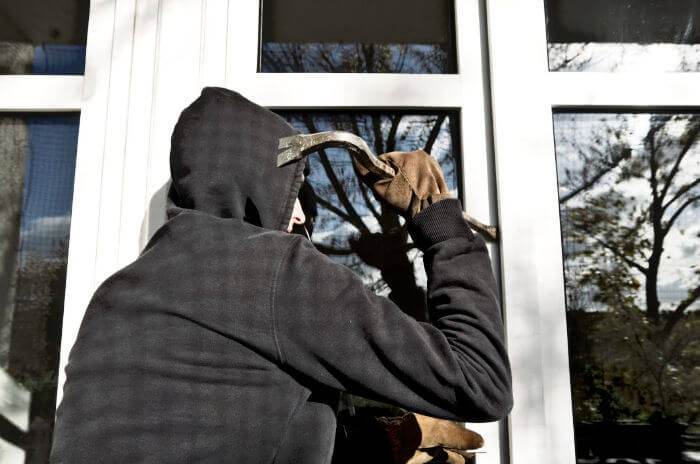
This image is property of modernize.com.
5. Window Shutters and Security Screens
In addition to selecting the right type of windows, incorporating window shutters and security screens can further enhance the safety and security of our homes. These additional layers of protection provide a deterrent for potential burglars and offer various other benefits.
5.1 Impact-Resistant Shutters
Impact-resistant shutters are specifically designed to protect windows from flying debris, particularly during severe weather events such as hurricanes or storms. These shutters are made from durable materials, such as aluminum or steel, and can be quickly closed or deployed as needed.
During a storm or high winds, impact-resistant shutters act as a barrier, preventing objects from breaking through the windows and entering our homes. This not only protects us from potential injury but also helps to preserve the structural integrity of our homes.
5.2 Security Screens and Bars
Security screens and bars are another effective way to enhance the safety and security of our homes. These features act as a physical barrier, preventing unauthorized entry and deterring potential intruders.
Security screens are typically made from strong materials such as stainless steel or aluminum. They are installed over the windows, providing an additional layer of protection against break-ins or forced entry attempts. Security bars, on the other hand, are rigid metal bars that are affixed to the frames, preventing intrusion through the windows.
Both security screens and bars are available in a variety of designs and styles, allowing us to choose options that complement the aesthetics of our homes while enhancing their security. These features provide peace of mind, knowing that our homes are protected even when we are away.
5.3 Deterrent for Burglars
Window shutters and security screens not only provide physical protection but also act as a visual deterrent for potential burglars. The presence of these additional security measures sends a clear message that our homes are well-protected, making them less attractive targets for criminals.
Burglars often look for easy and quick access points when targeting a property. By investing in window shutters and security screens, we create an extra layer of defense, making it more challenging for them to gain entry. This increases the chances of detection or interruption, discouraging burglars from targeting our homes in the first place.
6. Bulletproof Windows
For those seeking the highest level of safety and security, bulletproof windows provide unparalleled protection against ballistic threats. These windows are specifically designed to resist penetration from bullets or other high-velocity projectiles, ensuring the safety of our homes and occupants.
6.1 Laminated Bullet-Resistant Glass
The primary component of bulletproof windows is laminated bullet-resistant glass. This type of glass consists of multiple layers of glass and interlayers, typically made from polycarbonate or polyurethane. These materials are transparent, yet incredibly strong and impact-resistant.
Laminated bullet-resistant glass is designed to absorb and distribute the energy from a bullet, preventing it from penetrating the window. Even in the event of a successful penetration, the glass holds together, preventing debris or shards from entering our homes.
This level of protection is especially crucial for high-risk environments or properties that require heightened security measures, such as government buildings or high-value properties. Bulletproof windows provide peace of mind, knowing that our homes are fortified against even the most severe threats.
6.2 Reinforced Frames and Sashes
To complement the strength of bulletproof glass, the frames and sashes of these windows are also reinforced with robust materials. These reinforced frames help to maintain the integrity of the window system under extreme pressure or impact, preventing any potential weak points that could be exploited by intruders.
Reinforced frames and sashes make it even more challenging for bullets or other projectiles to breach the window, offering a comprehensive defense against ballistic threats. This combination of laminated bullet-resistant glass and reinforced frames ensures the highest level of safety and security for our homes.
6.3 Ballistic Resistance
Bulletproof windows are extensively tested to meet specific ballistic resistance standards, including the level of protection they provide against different types of firearms and ammunition. These windows are rated based on their ability to withstand ballistic threats, such as bullets or blasts.
Depending on the level of protection required, bulletproof windows are available in various ratings, ranging from lower-level handguns to high-powered rifles and military-grade projectiles. These options allow us to select the appropriate level of ballistic resistance based on our specific security needs.
Bulletproof windows offer a level of safety and security that goes beyond traditional window options, providing us with the utmost protection and peace of mind.
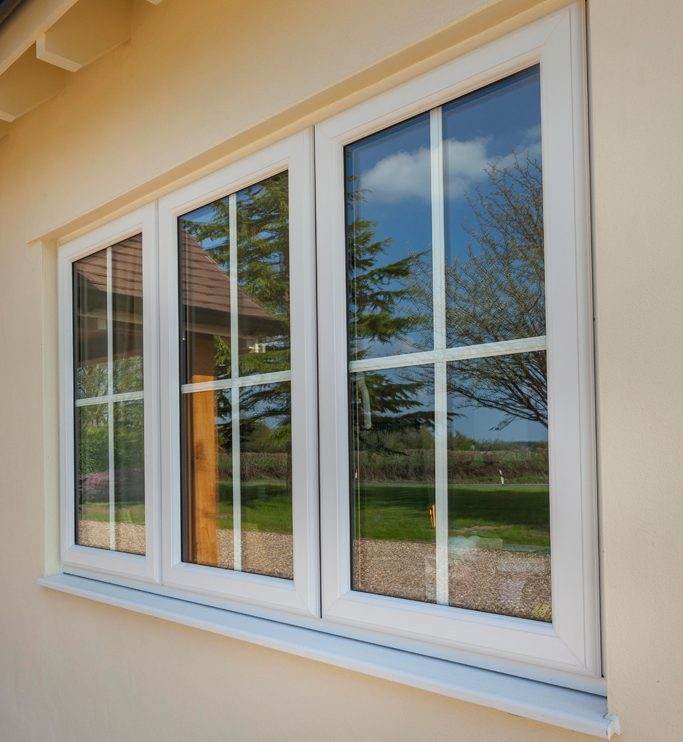
This image is property of www.framexpress.co.uk.
7. Fire-Resistant Windows
In the event of a fire, having fire-resistant windows can significantly enhance the safety of our homes. These windows are designed to withstand high temperatures, inhibit the spread of flames, and provide a means of escape. Let’s explore the features and benefits of fire-resistant windows.
7.1 Fire-Resistant Glass
Fire-resistant windows are constructed with specialized fire-resistant glass. This type of glass is made by incorporating multiple layers of glass with interlayers made of fire-resistant materials, such as gel or ceramic. These interlayers provide additional insulation and act as a barrier against heat and flames.
Fire-resistant glass is designed to withstand exposure to high temperatures for a specified amount of time, typically up to several hours. This allows occupants valuable time to safely evacuate the premises and provides firefighters with increased access and visibility during rescue operations.
7.2 Heat Insulation
In addition to its fire resistance properties, fire-resistant glass also offers excellent heat insulation capabilities. It helps to prevent the transfer of heat from the fire to the interior of the building, reducing the radiant heat that can potentially cause secondary fires or endanger occupants.
The heat insulation provided by fire-resistant windows can significantly slow down the progress of a fire and inhibit its spread. This feature is particularly important in areas where fires are likely to occur, such as kitchens or rooms with fireplaces. Fire-resistant windows serve as a barrier, protecting us and our homes from the dangerous effects of heat and flames.
7.3 Smoke Control
Another crucial benefit of fire-resistant windows is their ability to control the spread of smoke during a fire. These windows are typically designed to prevent or limit the passage of smoke, creating a safer environment for occupants.
Smoke inhalation is a leading cause of harm in a fire, and its toxic fumes can cause serious health issues. By preventing the spread of smoke, fire-resistant windows help to keep the air quality inside our homes as clear as possible, giving occupants more time to escape and reducing the risk of smoke-related injuries.
Fire-resistant windows provide a vital safety feature for our homes, offering a means of escape, inhibiting the spread of fire, and protecting us from the harmful effects of heat and smoke.
8. Window Film and Security Coatings
Window film and security coatings offer an additional layer of protection and can be used in combination with other types of windows to enhance their safety features. These products provide various advantages, including safety, security, and even UV protection.
8.1 Safety Film
Safety film is a thin, transparent layer that is applied directly to the surface of the glass. This film helps to hold the glass together in the event of breakage, preventing shards from scattering and reducing the risk of injury.
Safety film is particularly useful in older windows or buildings with large glass panes, where the replacement of the entire window may not be feasible or cost-effective. By adding a layer of safety film, we can enhance the safety and structural integrity of the existing windows, making them more resistant to breakage.
8.2 Security Coatings
Similar to safety film, security coatings provide an additional layer of protection for windows. These coatings are typically thicker and more durable than safety film, offering increased resistance to impact, breakage, and forced entry.
Security coatings are available in various levels of thickness, allowing us to select the appropriate level of protection based on our specific needs. The application of security coatings can enhance the safety of our homes, particularly when combined with other security measures, such as reinforced frames and locks.
8.3 UV Protection
In addition to their safety and security benefits, window film and security coatings can also offer UV protection. These products are designed to block a significant amount of harmful ultraviolet (UV) radiation from entering our homes.
Excessive exposure to UV rays can cause various health problems, such as skin cancer and premature aging. It can also damage furniture, flooring, and other interior components by causing fading or discoloration. By applying UV-protective films or coatings to our windows, we can significantly reduce the penetration of harmful UV radiation, ensuring the safety and longevity of both our homes and ourselves.
Window film and security coatings act as a versatile and cost-effective solution to enhance the safety, security, and overall comfort of our homes. They offer an additional layer of protection against breakage, forced entry, and harmful UV radiation.
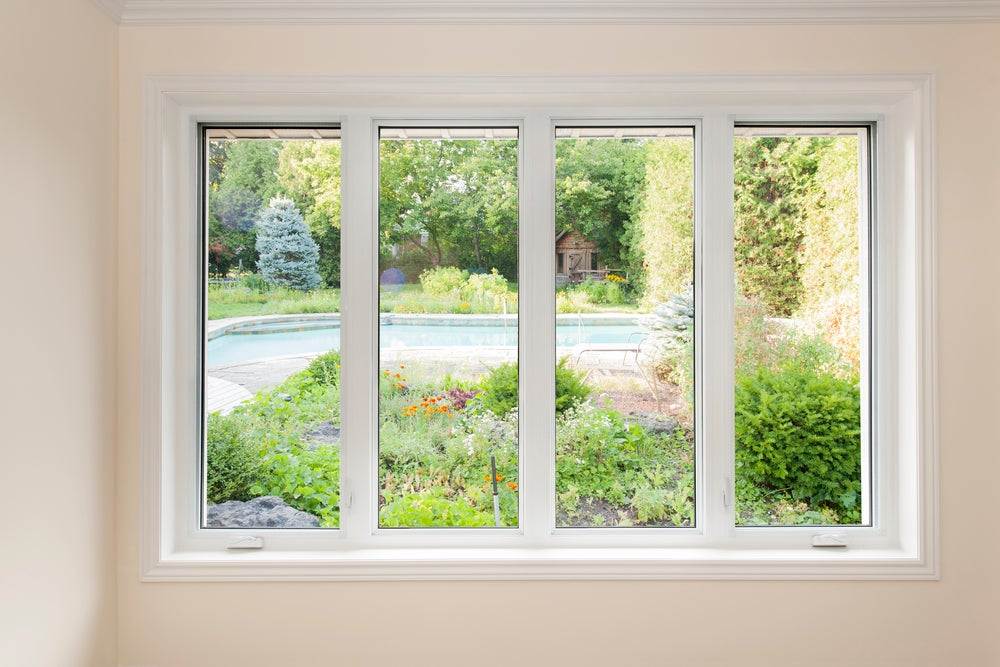
This image is property of empire-s3-production.bobvila.com.
9. Locking Mechanisms and Hardware
When it comes to window safety, the choice of locking mechanisms and hardware plays a significant role. These components are essential for securing our windows and preventing unauthorized access. Let’s explore the different options available.
9.1 Multi-Point Locking Systems
Multi-point locking systems offer an enhanced level of security by securing the window at multiple points along the frame. Unlike traditional windows with a single locking point, multi-point locking systems distribute the force applied by potential intruders, making it more difficult to force entry.
These locking systems typically feature a central lock that engages multiple bolts or hooks at several locations along the edge of the window. This provides a higher level of protection and stability, reducing the risk of break-ins and enhancing the overall safety of our homes.
9.2 Reinforced Locks and Handles
The choice of locks and handles is also crucial for window safety. Reinforced locks and handles are designed to withstand forced entry attempts, preventing intruders from manipulating or bypassing the locking mechanisms.
Reinforced locks are typically made from durable materials, such as stainless steel or solid brass, which offer increased strength and resistance to tampering. Similarly, reinforced handles are designed to be robust and secure, ensuring the window remains tightly shut and preventing unauthorized access.
By selecting windows with reinforced locks and handles, we can significantly enhance the security of our homes, making them more resistant to break-ins and providing us with peace of mind.
9.3 Keyless Entry Systems
For added convenience and security, keyless entry systems can be incorporated into our windows. These systems eliminate the need for traditional keys, making it easier and more efficient to lock and unlock the windows.
Keyless entry systems typically utilize a keypad, a proximity card reader, a fingerprint scanner, or even a smartphone app to grant access to the windows. This eliminates the risk of lost or stolen keys, as well as the need for duplicate keys. It also offers the flexibility to grant temporary or limited access to contractors or service providers, enhancing security even further.
Keyless entry systems provide an advanced level of security, convenience, and peace of mind, ensuring that our homes remain protected at all times.
10. Energy-Efficient Windows
Energy-efficient windows not only offer environmental benefits but also contribute to the overall safety and comfort of our homes. These windows are designed to minimize heat transfer, reduce energy consumption, and enhance insulation. Let’s explore the advantages of energy-efficient windows.
10.1 Energy-Saving Glass Coatings
Energy-efficient windows often feature specialized glass coatings that are designed to reflect a significant amount of solar radiation. These coatings help to minimize heat gain during hot summer months, reducing the need for air conditioning and decreasing energy consumption.
By blocking a portion of the sun’s heat and ultraviolet radiation, energy-saving glass coatings can help to maintain a more comfortable indoor temperature, even during hot weather conditions. This decreases the reliance on HVAC systems, reduces energy costs, and contributes to a more sustainable and eco-friendly lifestyle.
10.2 Low-E Glass
Low-emissivity (low-E) glass is another energy-efficient option for windows. This type of glass is coated with a thin, transparent layer of metallic oxides, which helps to reflect infrared heat while allowing visible light to pass through.
Low-E glass helps to regulate indoor temperatures by minimizing heat loss during colder months and reducing heat gain during warmer months. This results in improved energy efficiency, reduced reliance on heating and cooling systems, and lower utility bills. Additionally, low-E glass helps to prevent furniture and other indoor objects from fading due to harmful UV radiation.
10.3 High-Quality Insulated Frames
In addition to specialized glass coatings, energy-efficient windows often feature high-quality insulated frames. These frames are constructed from materials with superior thermal properties, such as vinyl or fiberglass, which help to prevent heat transfer and maintain a comfortable indoor temperature.
Insulated frames provide an effective barrier against outdoor temperatures, limiting the passage of heat or cold into our homes. This not only enhances our comfort but also reduces the strain on heating and cooling systems, resulting in energy savings and increased energy efficiency.
Investing in energy-efficient windows helps to create a more sustainable and environmentally friendly living environment. By reducing energy consumption and improving insulation, these windows enhance the safety, comfort, and overall efficiency of our homes.
In conclusion, ensuring the safety of our homes is paramount, and choosing the right windows plays a crucial role in achieving this goal. Impact-resistant windows, tempered glass windows, security windows, double or triple pane windows, window shutters and security screens, bulletproof windows, fire-resistant windows, window film and security coatings, locking mechanisms and hardware, and energy-efficient windows all offer distinct safety benefits and features.
From impact-resistant glass and reinforced frames to multi-point locking systems and energy-saving coatings, each type of window provides various advantages, ranging from protection against severe weather conditions to enhanced security and insulation.
By selecting the safest windows for our homes, we can create a secure, comfortable, and environmentally-conscious living environment. Whether it’s protecting against hurricanes, deterring burglars, or improving energy efficiency, investing in high-quality windows ensures the safety and well-being of our homes and our loved ones.
